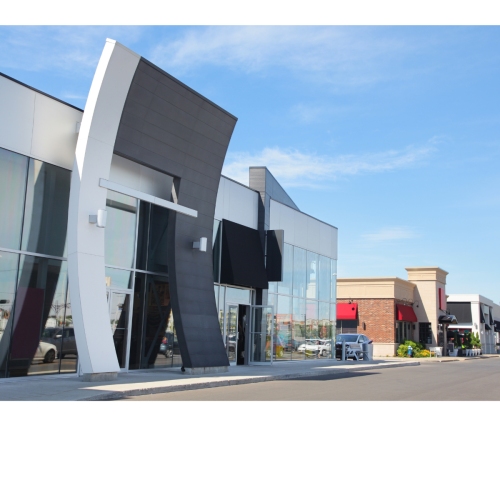Pre-Grenfell
The Regulatory Reform (Fire Safety) Order 2005 (“the Fire Safety Order”) was introduced in October 2006, placing a duty on certain bodies to enforce fire safety in non-domestic premises.
Whilst that means the 2005 Order does not usually apply to standard private houses, it does apply to residential premises such as blocks of flats and HMOs if they comprise common parts and systems (such as stairs, corridors, shared facilities, etc.) which are used by the occupants of more than one dwelling.
Briefly, the Fire Safety Order requires the ‘responsible person’ (often the building management company) to:
- “Take such general fire precautions as may reasonably be required in the circumstances of the case to ensure that the premises are safe” (article 8(2));
- Undertake “a suitable and sufficient assessment” of fire safety risks (article 9(1)), which should be reviewed regularly and especially if “there has been a significant change in the matters to which it relates including when the premises, special, technical and organisational measures, or organisation of the work undergo significant changes, extensions, or conversions” (article 9(3));
- Having a fire safety plan and strategy, by ensuring there are arrangements “for the effective planning, organisation, control, monitoring and review of the preventive and protective measures” (article 11(1));
- Eliminate or reduce risks from dangerous substance (article 12);
- Ensure there is sufficient fire safety equipment, including extinguishers and alarms (article 13);
- Ensure there are sufficient and suitable emergency exits, clearly marked (article 14); and
- Have regular fire safety tests and trained fire marshals, to allow for safe evacuation in the event of a fire (article 15).
- Failing to comply with any of the safety articles in the Fire Safety Order is a criminal offence and might be punished by a fine and/or a prison sentence.
Fire safety matters in the Building Regulations are contained in Approved Document B, a substantive document which provides technical requirements for various fire safety related matters, including cladding.
Post-Grenfell
In May 2018, following Grenfell a report authored by Dame Judith Hackitt (“the Hackitt Report”) looked at current Building Regulations and fire safety, with a particular focus on high-rise residential buildings.
Following the Hackitt Report the government announced that it would consult on banning the use of flammable material for cladding on high rise buildings in England; this eventually resulted in the Building (Amendment) Regulations 2018 (SI 2018/1230) (“the Cladding Regulations”) which came into effect on 21 December 2018.
The Cladding Regulations amended the Building Regulations and banned the use of combustible materials in the external walls of high-rise residential buildings. However, the Cladding Regulations, for seemingly arbitrary reasons, only apply to:
- All new residential buildings above 18 metres in height;
- New dormitories in boarding schools, student accommodation, registered care homes and hospitals above 18 metres; and
- Buildings where there is ‘material change of use’ that brings an existing building within one of these categories (e.g. conversion from commercial high-rise to residential).
“building work shall be carried out so that materials which become part of an external wall, or specified attachment, of a relevant building are of European Classification A2-s1, d0 or A1, classified in accordance with BS EN 13501-1:2007+A1:2009 entitled “Fire classification of construction products and building elements. Classification using test data from reaction to fire tests” (ISBN 978 0 580 59861 6) published by the British Standards Institution on 30th March 2007 and amended in November 2009” (Regulation 2(5)).
Importantly, the Cladding Regulations did not force building owners to deal with problems with existing residential buildings, or with new residential buildings below 18 metres in height.
In December 2018, the Government published advice relating to cladding systems on existing buildings, known as Advice Note 14 (“AN14”). AN14 recommends that cladding systems should be of limited combustibility and that they should satisfy the performance criteria produced by Building Research Establishment (“BRE”) Global and set out in its document known as “BRE135”.
It is standard for buildings to be assessed for compliance with AN14 in respect of how the cladding was installed, and also so that the cladding system has to have passed a fire test by an approved United Kingdom Accreditation Service test centre. Alternatively, mortgage providers require a statement by a suitably qualified independent professional advisor who is shown as a member of the approved professional bodies listed in AN14.
AN14 has since been superseded (along with other similar Advice Notes) by a document dated January 2020 called ‘Advice for Building Owners of Multi-storey, Multi-occupied Residential Buildings’ (“the 2020 Guidance”) (see paragraph 1.3 of the 2020 Guidance which confirms the amalgamation and supersession).
Short supplementary guidance to the 2020 Guidance was released in November 2020.
The 2020 Guidance makes it clear that there is “the need to assess and manage the risk of external fire spread applies to buildings of any height” (paragraph 1.5; our emphasis), ignoring the 18 metre limit imposed by the Cladding Regulations.
The 2020 Guidance also states “the government has announced its intention to introduce a Fire Safety Bill which will clarify that building owners and managers of multi-occupied residential premises of any height must fully consider and mitigate the risks of any external wall systems and fire doors in discharging their duties under the Fire Safety Order” (paragraph 1.6; our emphasis), although in light of the ongoing coronavirus pandemic this will likely be delayed.
As such the 2020 Guidance remains, for now, merely advisory, with no legal force. However, it is expected that that will likely change in the near future, and we suggest compliance with it, nonetheless. Compliance at an early stage will be beneficial in the long run, as it will show that the landlord/management company take fire safety seriously and also minimise the risk of any incidents.
The 2020 Guidance advises that any:
“fire risk assessment should take in to account a number of factors other than height and material type, including the vulnerability of residents, location of escape routes, and the complexity of the building […] existing residential buildings which have external wall systems that contain combustible materials may not meet an appropriate standard of safety and could pose a significant risk to the health and safety of residents, other building users, people in the proximity of the building or firefighters. External walls of residential buildings should not assist the spread of fire, irrespective of height. It is important therefore to understand both the materials used in the external wall construction and whether the entire system has been designed, installed, and, maintained appropriately” (paragraphs 1.9 to 1.10).
The 2020 Guidance reminds building owners that “it is also a requirement of the Fire Safety Order that any purpose-built block of flats – regardless of height – should have an up to date fire risk assessment and appropriate fire precautions in place” (paragraph 1.11). Such requirements are detailed at article 9 of the Fire Safety Order and summarised above.
As such, “the Expert Panel is now updating its advice, due to the increasing concerns that the industry is not acting with due haste to remediate buildings with category 3 ACM. The Expert Panel believes ACM cladding (and other metal composite material cladding) with an unmodified polyethylene filler (category 3) presents a significant fire hazard on residential buildings at any height with any form of insulation” (paragraph 1.15).
Building owners are reminded that they “are responsible for ensuring the safety of their buildings [and they] should have an up to date fire risk assessment and understand the construction of external walls and the potential performance of those wall systems in the event of fire” (paragraph 3.1). The need for a new fire safety assessment after 12 months was also confirmed in the 2019 Assessment itself.
Accordingly, “building owners should check their records for information about the external wall systems used on their buildings […] it should also be possible to obtain advice and information from the product manufacturers and/or contractors about the fire performance, correct installation and maintenance of materials used. If building owners are unable to obtain written information on the external wall system, then they should seek the advice of a building surveyor or similar competent person with suitable experience of high-rise residential buildings. They can advise building owners on the construction of the external wall system of the building and the appropriate next steps” (paragraphs 3.4 to 3.6; our emphasis).
There is a Government free screening check available (paragraph 3.7).
In short, “building owners of residential buildings below 18m should consider whether they need to follow some or all of these steps to inform their fire risk assessment” (paragraph 3.8) – although building owners often delegate this responsibility down the leasehold chain, usually to management companies run by leaseholders.
As stated above, the 2020 Guidance currently has no binding legal effect and landlords/managing agents have no legal obligation to undertake an intrusive survey if required. However, common sense suggests that:
- The guidance will likely become law in due course, and early compliance is therefore preferable, especially as it shows the landlord/management company are taking fire safety seriously, it could be cheaper in the long run, and it negates the risk of any incidents occurring in the meantime;
- The guidance is being provided with the intention to get building owners to voluntarily comply with its advice, rather than forcing them to, on the presumption that such a tactic will be more effective, and therefore if there is an incident we anticipate any enforcing authority taking an exceptionally dim view of the 2020 Guidance being ignored; and
- As such, if the guidance is ignored and there is a fire at a property, there will likely be no defence to any civil or criminal proceedings to say that the guidance was not legally binding.
If a party fails to comply with the recommendations in the 2020 Guidance, then they risk falling foul of the 2020 Guidance (which, as stated above, is likely to become legislation in due course), and should there be any form of tragic accident related to fire safety then non-compliance might confer liability not only on the landlord or managing agent for corporate manslaughter, but also potentially personally on its directors for gross negligence manslaughter.
It is therefore important that landlords and managing agents take fire safety seriously regardless of the height of the building. However, there are building owners and managers out there who are seeking to ‘game’ the system and to save costs by not adopted the same standard of care for building under 18m in height, as they are obliged to do for buildings over 18m. As such, the guidance may at some point need to be made mandatory.
Recourse for tenants
Currently, there is very limited recourse for tenants (such as challenging service charges they believe are unreasonable), but campaigners are trying to change that by forcing the Government to extend the scope of the Cladding Regulations and provide more funds for buildings to be remedied.




